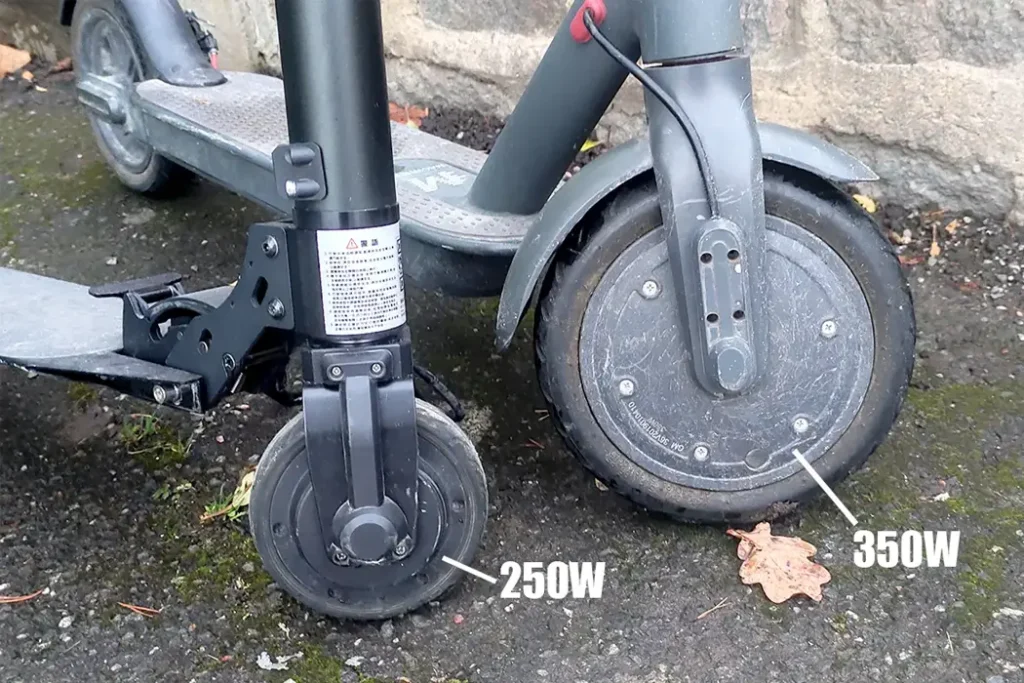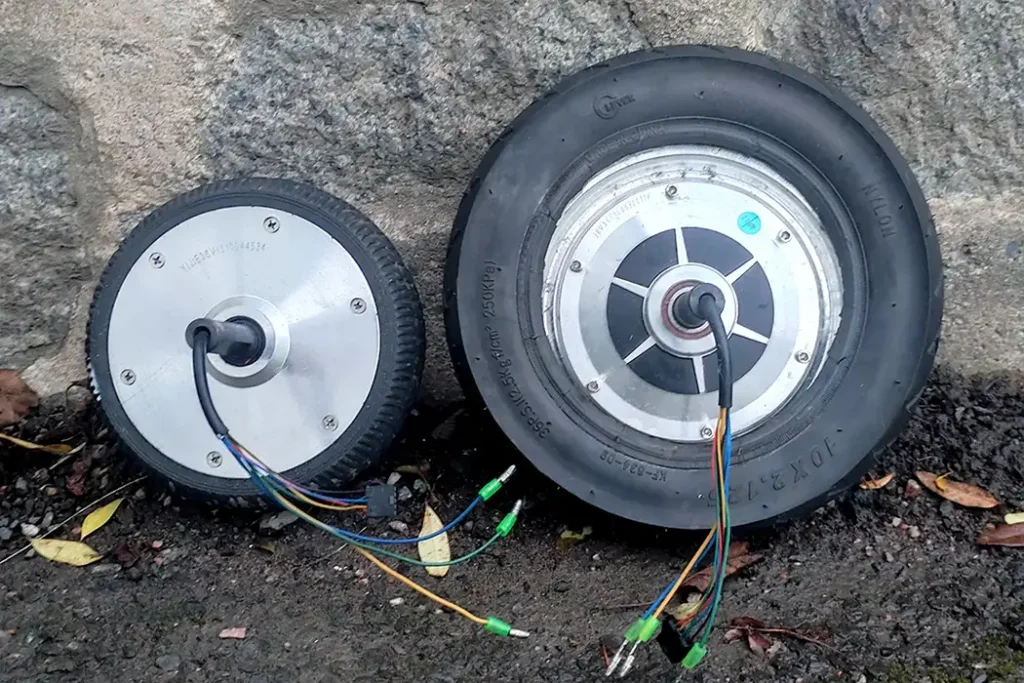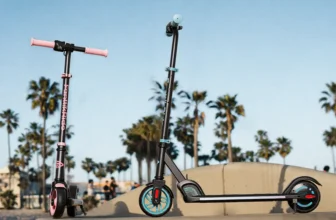Regulating electric scooters is no simple task, I will start by setting that straight. Laws differ widely across US states and countries often reflecting a patchwork of rules born from varying safety concerns. While speed limits are universally accepted as a critical measure for safety, some governments have taken it a step further by imposing limits on power output. These restrictions, such as the common 250W limit across many European countries, may appear to enhance safety but often have unintended and discriminatory consequences.
This article aims to examine and shed a light on how such regulations disproportionately affect heavier riders, the unintended barriers they create, and the broader implications for the electric scooter industry. We’ll also explore alternative approaches being considered worldwide to address these issues. Many of these countries laws complete prohibit the use of almost all of our favorite electric scooters.
Why Power Output Restrictions Fall Short
Governments imposing power output limits aim to promote safety by ensuring scooters can’t accelerate too quickly or reach unsafe speeds. Often limited at 250W with maximum speeds of 20–25 km/h (12.4–15.5 mph), these limits often miss the mark. Unless their intent is to only have electric scooters for kids and teens, fine.
Power output isn’t just about speed and acceleration; it’s the backbone of a scooter’s performance. A 250W motor may suffice for a lightweight rider on flat terrain, but add a heavier rider, hilly landscapes, or rough urban roads, and the scooter will struggle to carry out its mission. Reduced power leads to poor performance, quicker wear and tear, and even diminished environmental benefits due to shorter product lifespans. Why I don’t accept the environment friendly talk from regulators, because they say one out loud and then go and put regulation on the books that goes completely against “their goal.”
Discrimination Against Heavier Riders

The biggest issue with power output restrictions are how they disproportionally effect heavier riders negatively. It is common sense that a 110-pound (50 kg) rider will have a vastly better experience on a 250W scooter compared to someone weighing 220 pounds (100 kg). The latter may find the scooter sluggish, unreliable, or even unusable for certain tasks.
This bias extends beyond personal preferences. Studies, such as this one from the NIH, show that men, on average, weigh 15.7% more than women and are 7.4% taller. These regulations indirectly exclude a significant portion of the population, especially men and larger individuals, from participating in the micro mobility movement on the same level.
Additionally, these limits reduce the practicality of scooters for daily tasks. Carrying groceries or a slightly well-packed backpack can significantly degrade performance, making scooters less viable for such uses. These regulations directly contradict the shared goal of reducing reliance on fossil-fueled vehicles and promoting sustainable transportation.
Industry Pushback and Global Perspectives
The electric scooter industry, along with enthusiasts and experts, has consistently opposed power output limits. Safety measures are widely supported, but capping power at 250W is seen as a counterproductive solution. I myself live in a country where these laws are already on the books, and I have been lobbying for them not to use these measures since 2018. In vain, I must add.
In New Zealand, the Ministry of Transportation recently received a letter from Jen Hobbs of FreedPEV, co-signed by two other electric ride companies. In this letter they highlight how these regulations are discriminatory based on riders weight. New Zealand has a slightly higher power output regulation of 300W. Not that it makes much difference when most scooters have a nominal power of 350W or above. Similar concerns echo across Europe, where many countries already enforce the even stricter 250W limits. However, a shift there may be on the horizon.
The European Transport Safety Council (ETSC) recently proposed updated EU-wide standards for scooters. While continuing to limit speed to 20 km/h, the ETSC suggests implementing acceleration restrictions based on a 2m/2s rule. This will result in scooters that cannot accelerate faster than 2 meters in 2 seconds.
This method could eliminate discrimination against heavier riders, though it introduces new challenges and completely misses the mark when it comes to actually clamping down on the core safety issues which is to limit the risks of accidents.
What Does the Data Say?
The primary justification for strict electric scooter regulations is safety. Reducing the risks to riders, pedestrians, and other vehicles sharing the same spaces. However, the evidence strongly suggests that rental scooters, not private ones, are the primary source of safety concerns.
According to the New Zealand Transportation Agency’s (NZTA) Safety Review, 91.7% of e-scooter injuries result from isolated falls, while only 2.8% involve collisions with cars and a mere 0.6% with pedestrians. The report also highlights that riders of rental scooters are significantly more likely to require hospital treatment than those using privately owned scooters, citing a lack of operational skill and experience among rental users as a key factor.
The data is compelling:
- 93.3% of recorded admissions involved riders using rental scooters.
- Just 1.1% of hospital cases involved private scooter users.
- 5.6% of riders did not specify the type of scooter used.
In addition to inexperience, other factors like alcohol or drug use, improper riding behavior, and lack of safety gear contribute to rental riders’ disproportionately higher injury rates.
This evidence suggests that regulators should shift their focus toward rental companies. These companies allow virtually anyone to hop on an e-scooter without safety training or proper equipment.
Enforcing stricter guidelines on rental providers, such as mandatory helmet use, tracking their prior riding experience with an electric scooter, and stricter intoxication policies, could significantly mitigate injury risks while preserving the rights and convenience of responsible private riders.
Countries with Low Power Output Regulation for Electric Scooters
| Country | Power Limit |
|---|---|
| New Zealand | 300W |
| United Kingdom | Private scooters banned in public |
| Germany | 250W |
| Netherlands | 250W |
| Denmark | 250W |
| Australia (Victoria) | 200W |
| France | 250W |
| Italy | 250W |
| Belgium | 250W |
| Sweden | 250W |
| Spain | 250W |
| Austria | 250W |
| Portugal | 250W |
| Norway | 250W |
| Finland | 250W |
| Ireland | 250W |
| Switzerland | 250W |
| Luxembourg | 250W |
| Czech Republic | 250W |
Electric Motors vs. Combustion Engines
To understand why power output limitations are problematic, it’s important to distinguish electric motors from traditional fuel engines. Combustion engines rely on gears to adapt to varying conditions, such as steep inclines or heavy loads. In contrast, electric motors operate with fixed torque and power delivery, meaning their ability to handle such conditions is directly tied to their raw power.
Restricting power doesn’t just lower their speed capabilities, it hampers usability, reduces their efficiency, and makes them less practical for a wide range of riders and tasks.
The Risk of Criminalizing Riders

Introducing overly restrictive regulations, such as New Zealand’s 300W power limitation or Europe’s evolving standards, could inadvertently criminalize a vast majority of scooter users. Research shows that 95% of electric scooters in circulation have a nominal motor power above 250W, whether for personal or commercial use.
Forcing riders to update their scooters or comply retroactively with these regulations would penalize those who adopted the technology early, undermining the goals of the micro mobility movement.
The Need for A Delicate and Balanced Approach
The debate around power output/acceleration restrictions for electric scooters highlights a broader tension between safety, personal responsibility and inclusivity. While governments have a duty to ensure public safety, imposing arbitrary limits without considering the diverse needs of riders creates unnecessary barriers. And when the data clearly shows that most accidents recorded are due to lacking regulations for electric scooter rental companies, regulating use for them should be the focus. But sadly it looks like responsible private riders will inevitably get caught under the same rules as per usual.
The ETSC’s 2m/2s acceleration rule is better than the current regulations, but it still doesn’t solve the actual safety concerns. Ultimately, regulators must strike a balance that prioritizes inclusivity, environmental sustainability, and practicality over one-size-fits-all restrictions.
Electric scooters have the potential to revolutionize urban mobility with the ability to even tackle long range rides and they’re already doing so, for good and bad. But for it to be a sustainable solution for commuters, policymakers must make regulations that empower riders. Regardless of their size, weight, or where they’re situated. By embracing innovative and inclusive approaches, we can ensure that micro mobility truly serves everyone and continues to grow in popularity.
We did reach out to the Swedish Police and the NZ Ministry of Transportation through multiple venues to try and get a comment on the process of enforcing these laws. But have yet received a response.







